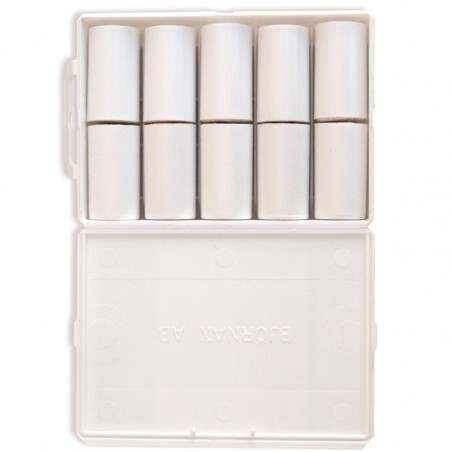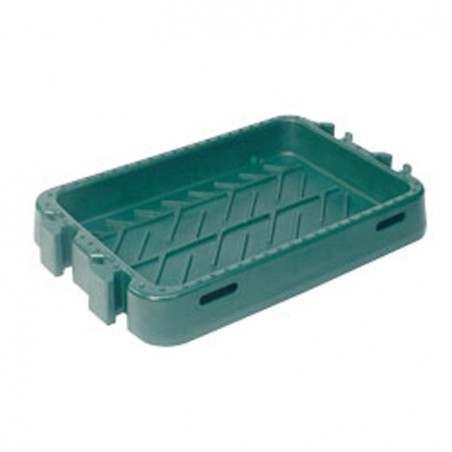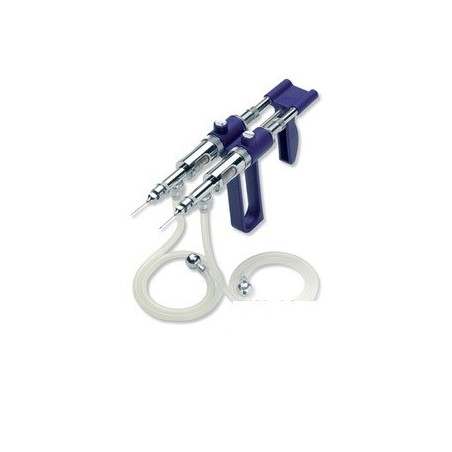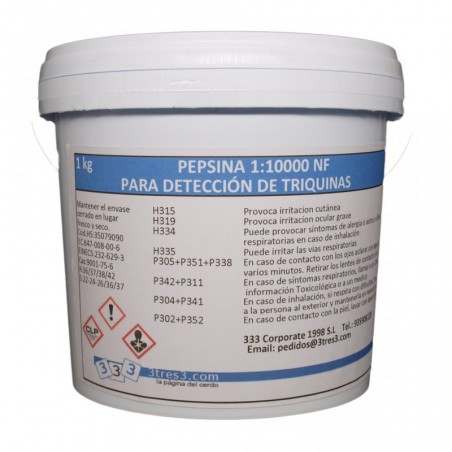Although physical barriers (skin, mucosal epithelia) have a certain ability to oppose aggressor microorganism, the body's efficiency in fighting pathogens is primarily based on the activation of innate immunity.
Innate immune response is involved in the initial elimination of the pathogen and also in the differentiation and activation of the dendritic cell (DC) for an efficient antigen presentation to the lymphocytes of the specific immunity.

The innate immunity onsets with natural pathogen recognition mediated by PRRs (Pattern Recognition Receptors) followed by cellular activation and early and efficient production of pro-inflammatory cytokines. The PRRs-mediated mutual activation of cells at different tissue level, epithelial and endothelial cells and sentinel cells, resident macrophages, DC and mast cells, triggers the inflammatory response with production of “classical proinflammatory cytokines and chemokines” (IL-1, TNFα, IL-8, IL-6, MCP1) necessary for the recruitment and activation of the cellular effectors of innate immune response.
The effector systems (Table 1) of the innate response are considered Type 1 Interferons and pro-inflammatory cytokines, complement, acute phase proteins, antimicrobial proteins and the inflammatory/innate cells such as phagocytes, NK cells and γ/δ T lymphocytes.
Tab. 1: Components of Innate defensive response.
| Physical barriers |
| - Epithelium integrity (skin, respiratory and gastrointestinal tracts) - Self-cleaning: mucus flow, coughing, vomiting, diarrhea - Pepsin and gastric pH - Competition by commensal flora |
| Internal barriers (innate immunity) |
| Cells |
| - Neutrophils - Monocytes/macrophages - Mast cells - Natural killer cells - Dendritic cells - γ/δ T lymphocytes |
| Humoral components |
| - Complement (alternative and lectin pathways) - Type 1 Interferons (IFNα/β) - Acute phase proteins: c-reactive protein (CRP), mannose binding lectin (MBL) - Defensin - Inflammatory cytokines (IL-1, TNFα, IL-8, IL-6, IL-12 IL-18, IL-15, IFNγ) |
During viral infection, TLRs-mediated production of type 1 interferons is critical to sustain an efficient response against virus (direct antiviral activity and inflammatory cells recruitment) and the subsequent activation of the acquired immunity (maturation of DC). The recruitment of peripheral blood monocytes is followed by their differentiation into inflammatory macrophages and then in activated inflammatory macrophages by means a cascade of cytokines produced in the microenvironment (IFNα/β, IL-1, TNFα, IL-12 and, last, IFNγ). The activated macrophages act as professional phagocytes towards the opsonized pathogens/infected cells, as antigen presenting cells in inflamed tissues and as effector cells for the cell-mediated immunity. Moreover they produce cytokines and growth factors that regulate and modulate immune and inflammatory innate mechanisms: M1 macrophages defend against microbial invaders and produce proinflammatory cytokines; M2 macrophages have opposite effect: they reduce inflammation and produce Cytokines that suppress immune response. In viral infection, it is critical the recruitment and activation of Natural Killer (NK) cells from the blood and lymphoid tissues into the site of infection, where they are activated by TNFα and IL-12 produced by inflammatory activated macrophages.
The reciprocal cooperation between macrophage and NK and DC cells is crucial for induction optimal immunity because it sustains their activation to kill and destroy virus infected cells as well as to activate immature DC to become antigen presenting cells. NK activates DC maturation by means of TNFα and IFNγ, then mDC secrete a wide pattern of cytokines (IL-12, IL-23, IL-6, IL-21, IL-27, and TGFβ) that control T cell immune response against virus (Th1) and extracellular bacteria (Th17) inducing the differentiation of T helper cells. In fact, IL-12 induces Th1 differentiation, while TGFα, IL-6, IL-21 and IL-23 induce Th17 differentiation. Otherwise IL-27 suppresses Th1 and Th17 response. Furthermore, cytokines produced by DC (Il-18, Il-12, IL-15 and IFNγ) promote survival, activation and cytotoxicity of NK cells.
Even γ/δ-T-lymphocytes act as a first line of defense against infectious agents and are important producers of IFNγ.
The innate immune response against the extracellular bacteria is characterized by the secretion of substances with antibiotic activity (lysozyme and defensins), by the opsonizing action of humoral factors (complement, C-reactive protein, mannose binding lectin, etc.), by a coordinated action of professional phagocytes (neutrophils and macrophages) recruited by chemokines (IL-8 and MCP1) and activated by pro-inflammatory cytokines (IL-1, TNFα).

The complement system plays an important role in innate antimicrobial immunity as it recognizes PAMPs (Pathogen-Associated Molecular Patterns) and is activated through alternative or lectin pathways; this trigger the cascade and release of complement fragments (C3b) with opsonization (phagocytosis) and killing of pathogen, independently of the action of antibodies. Phagocytes have a receptor (CR1 or CD35) that binds C3b triggering phagocytosis.
C-reactive protein (CRP) is a pentraxin (pentameric structure) binding phosphocholine on bacteria, protozoa and fungi; it activates classic pathway of complement (binds C1q) and also increases phagocytosis by neutrophils (opsonization). Mannose binding lectin (MBL) is a collectin binding with high affinity mannose and fucose residues on bacteria, activating the complement pathway. Surfactant T and D are protein covering the lung alveolar epithelium; they bind pathogens promoting phagocytosis by alveolar macrophages.
The efficiency of innate immune response is necessary for an efficient acquired immunity. The PRRs-mediated recognition of the pathogen with production of inflammatory cytokines (IL-1, TNFα, IFNα/β, chemokines) plays a major role in the connection between innate and acquired immunity; this allows the recruitment and activation of inflammatory and innate cells in the sites of the infection as well as lymphocytes and DC in lymphoid tissues and lymph nodes tributary to inflamed area. Moreover, innate cytokines induce the maturation of DC for antigen presentation and so, driving the differentiation of T helper lymphocytes and finalizing the specific immunity.









